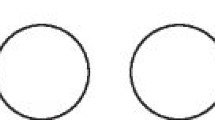Abstract
Data Sources
The Cochrane Oral Health Group Trials Register, Cochrane Central Register of Controlled Trials, Medline and Embase were searched, along with searches by hand of relevant journals, when these had not already been searched as part of the Cochrane Oral Health Groups handsearching programme. The references of relevant publications were checked for further studies.
Study selection
als were selected if they met the following criteria: they were randomised controlled trials (RCT) or quasi-RCT, involved the extraction of the primary maxillary canine and assessed eruption/ noneruption of the palatally displaced maxillary permanent canine.
Data extraction and synthesis
Seven review authors independently, in duplicate, examined the studies found in the search. The primary outcome was the reported prevalence of eruption or noneruption of the ectopic permanent canine into the mouth following observation or intervention. Results were to be expressed as risk ratios for dichotomous outcomes with 95% confidence intervals and mean differences for continuous outcomes. Heterogeneity was to be investigated, including both clinical and methodological factors.
Results
Of 324 publications identified, 295 were excluded after reviewing the abstract. Full articles were obtained for the remaining 31, of which 19 were not reported in English and required translation. Three reports of two RCT were identified for possible inclusion in the review but the data in the publications were not presented in a usable form and the authors have been contacted for further details.
Conclusions
There is currently no evidence to support the extraction of the deciduous maxillary canine to facilitate the eruption of the palatally ectopic maxillary permanent canine. Two RCT were identified but, unfortunately, because of deficiencies in reporting, they cannot be included in the review at the present time.
Similar content being viewed by others
Commentary
This systematic review deals with the issue of extracting maxillary primary canines as a means to positively impact the eruption of palatally displaced permanent canines.
Methodologically, the systematic review follows the well-established Cochrane guidelines. Some questions that came to my mind regarding the selection criteria were as follows:
-
1
Although the age range for patients to be included seems to be adequate, at 10–13 years of age, the determination of only 20% of outliers (children younger than 10 or older than 13) has not been properly defended.
-
2
There is no indication of what was deemed a satisfactory definition (diagnosis) of palatally displaced canines. Significant differences in what different authors consider a palatally displaced canine could yield highly dissimilar results.
-
3
Upper canines do not usually fully erupt until 12–13 years of age. Therefore, a followup period of 6 months seems rather short, especially for individuals for whom intervention (extraction of deciduous teeth) or inclusion in the control group was at the lower end of the age inclusion criteria. For some of these children, a followup of up to 3 years could be required.
It is clearly stated that the authors of two potentially useful RCT have not provided supplementary information and therefore the studies have been excluded so far. That yielded an end result of no studies being considered. This was addressed in the conclusions, but in the discussion of the review itself there is a description of what key information has not been reported in those two excluded articles. This might be more appropriate in the results section, at least in the format used by the authors to present the articles' missing information. Aside from this, there is almost no discussion in the review section. Points such as limitations in two-dimensional imaging to determine canine position could be included, and also consideration of the impact of three-dimensional imaging.
Was there any indication that the missing data would be available soon? If so, why not delay the publication of the systematic review for a few months to allow a more meaningful discussion? Finally, was part or all of the first sample included in the second study, as it appears that this may be the case?
The message that I can convey to general practitioners is in line with the systematic review's conclusion. There is currently no strong evidence to justify the prophylactic extraction of deciduous canines in apparently palatally displaced canines.
Author information
Authors and Affiliations
Additional information
Address for correspondence: Nicola Parkin, Department of Oral Health and Development, School of Clinical Dentistry, University of Sheffield, Claremont Crescent, Sheffield S10 2TA, UK. E-mail: nicolaparkin@hotmail.com
This paper is based on a Cochrane Review published in The Cochrane Library 2009, Issue 2 (see www.thecochranelibrary.com for information). Cochrane Reviews are regularly updated as new evidence emerges and in response to feedback, and The Cochrane Library should be consulted for the most recent version of the review
Parkin N, Benson PE, Shah A, et al. Extraction of primary (baby) teeth for unerupted palatally displaced permanent canine teeth in children. Cochrane Database Syst Rev 2009; issue 2
Rights and permissions
About this article
Cite this article
Flores-Mir, C. Prophylactic extraction of deciduous canines. Evid Based Dent 10, 102 (2009). https://doi.org/10.1038/sj.ebd.6400678
Published:
Issue Date:
DOI: https://doi.org/10.1038/sj.ebd.6400678
This article is cited by
-
20 years - 20 highlights
Evidence-Based Dentistry (2019)



